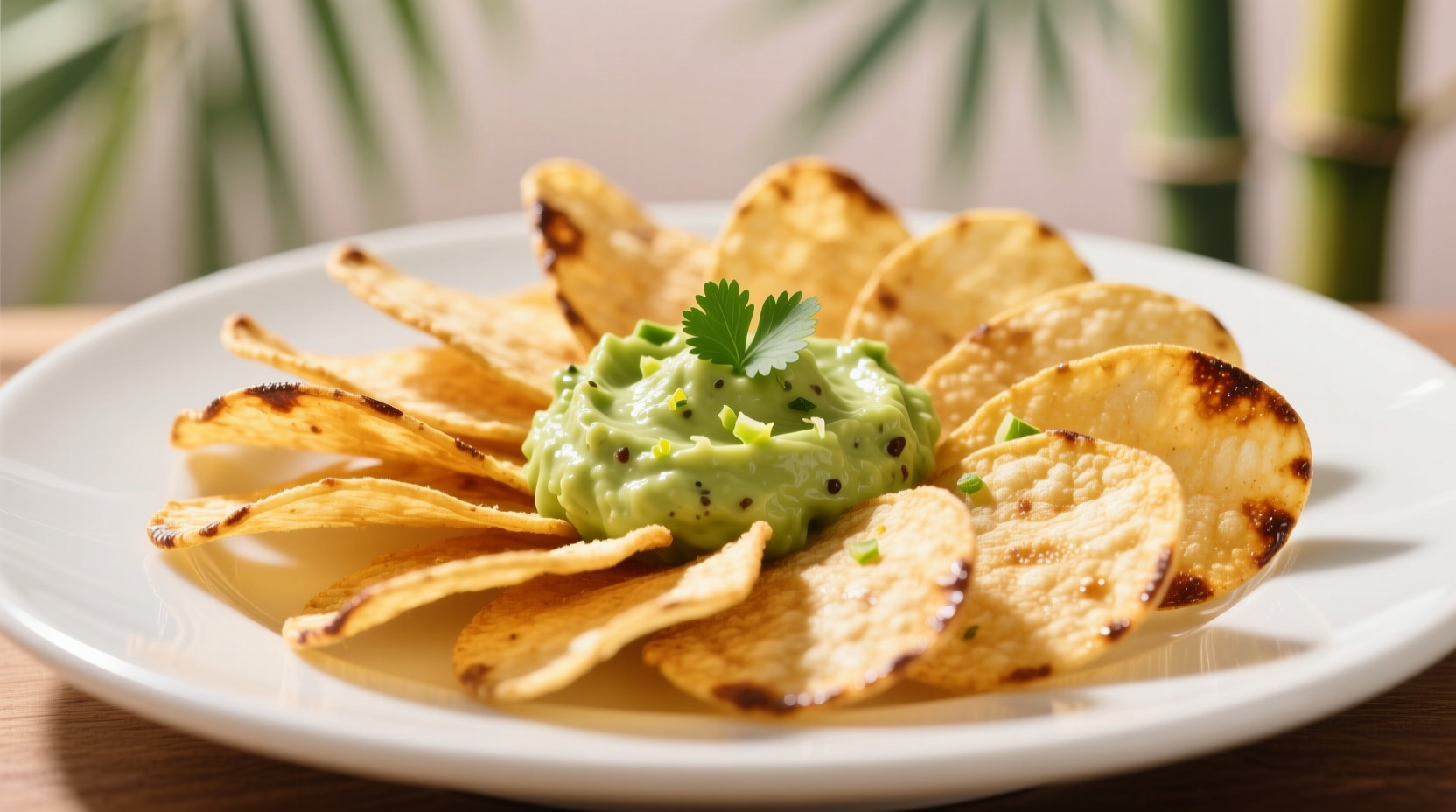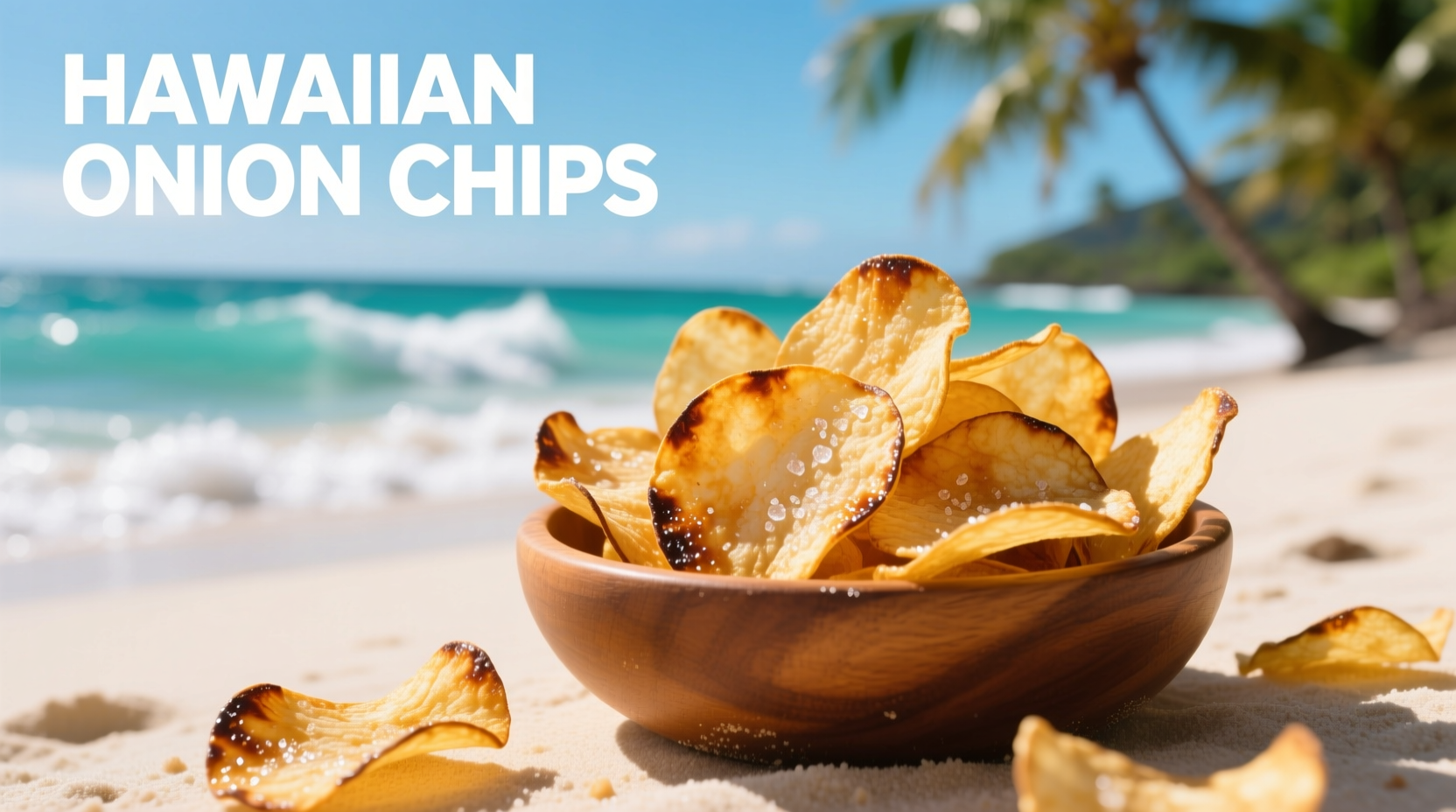Discover why these golden-brown morsels have become a staple appetizer across American restaurants and snack aisles. This comprehensive guide reveals the authentic story behind Hawaiian onion chips, their distinctive flavor profile, and how they differ from similar snacks you might expect.
The True Origin Story of Hawaiian Onion Chips
Contrary to popular belief, Hawaiian onion chips didn't originate in Hawaii. Food historians trace their creation to mainland US restaurants in the 1980s that sought to capitalize on the growing popularity of Hawaiian-inspired cuisine. These establishments began adding sweet elements like pineapple juice or brown sugar to traditional onion ring batter, creating what would become known as Hawaiian onion chips.
| Time Period | Development | Key Innovation |
|---|---|---|
| 1980s | First appeared in mainland US restaurants | Added sweet elements to traditional onion rings |
| 1990s | Became popular bar snack | Standardized batter recipes with tropical flavors |
| 2000s | Commercial snack production began | Dehydrated versions for grocery stores |
| 2010s-Present | Nationwide availability | Variations with different sweeteners and spices |
This timeline shows how Hawaiian onion chips evolved from a regional restaurant specialty to a nationally recognized snack. According to the USDA National Agricultural Library, the term "Hawaiian" in food products often refers to sweetened versions of traditionally savory dishes, reflecting mainland interpretations of Hawaiian flavors rather than authentic Hawaiian cuisine.
What Makes Hawaiian Onion Chips Unique
The distinctive character of Hawaiian onion chips comes from three key elements that differentiate them from regular onion rings or chips:
- Sweet-savory balance - Typically contains 15-20% natural sweeteners like pineapple juice concentrate or coconut sugar in the batter
- Onion variety - Often made with sweeter onion varieties like Maui or Vidalia rather than standard yellow onions
- Texture profile - Thinner slices than traditional onion rings, creating a chip-like crispness throughout

Food science research from the Institute of Food Technologists explains that the Maillard reaction between the natural sugars in sweet onions and the added sweeteners creates complex flavor compounds not found in regular onion rings. This chemical process produces the characteristic caramelized notes that define authentic Hawaiian onion chips.
Where to Find Authentic Hawaiian Onion Chips
While you won't find traditional Hawaiian onion chips in Hawaii itself (where locals prefer simpler preparations like plain fried onions), they're widely available across the mainland US with some regional variations:
- Restaurant availability - Most common in casual dining chains and sports bars across the Sunbelt states
- Commercial products - Several major snack brands now offer dehydrated versions in grocery stores
- Regional differences - West Coast versions tend to use more coconut flavoring, while Southern versions emphasize pineapple notes
It's important to note that authentic Hawaiian onion chips should never contain artificial fruit flavors. The U.S. Food and Drug Administration requires that products labeled with specific fruit names must contain corresponding natural flavors. When purchasing commercial versions, check for pineapple juice concentrate or coconut sugar in the ingredients rather than "natural flavors" or artificial sweeteners.
Creating Homemade Hawaiian Onion Chips
For those wanting to experience authentic Hawaiian onion chips, making them at home ensures the freshest flavor and proper sweet-savory balance. Here's a professional chef's approach:
- Select sweet onions like Vidalia or Maui (avoid pungent yellow onions)
- Cut into 1/8-inch slices for proper chip-like texture
- Soak in buttermilk with 2 tablespoons pineapple juice per cup
- Create batter with equal parts flour and cornstarch plus 1 tablespoon coconut sugar per cup
- Fry at precisely 350°F (175°C) for 90-120 seconds
The critical factor is maintaining the proper oil temperature. According to culinary research published by the Culinary Institute of America, temperatures below 340°F create greasy chips, while temperatures above 360°F burn the delicate sweeteners before the onions cook through.
Perfect Pairings for Hawaiian Onion Chips
These versatile snacks complement a wide range of foods and beverages when served as an appetizer or side dish:
- With proteins - Excellent alongside grilled chicken, pork tenderloin, or mahi-mahi
- Dipping sauces - Best with creamy sauces like garlic aioli or coconut-lime crema
- Beverage pairings - Pairs beautifully with crisp white wines, light lagers, or tropical fruit smoothies
Professional chefs note that the sweet element in Hawaiian onion chips makes them particularly versatile for balancing spicy dishes. The natural sugars help counteract heat from chili peppers, making them an excellent accompaniment to dishes with medium to high spice levels.
Frequently Asked Questions
Are Hawaiian onion chips actually from Hawaii?
No, Hawaiian onion chips originated in mainland US restaurants in the 1980s. They were created by adding sweet elements like pineapple to traditional onion rings, capitalizing on the popularity of Hawaiian-inspired cuisine. Authentic Hawaiian cuisine rarely features this type of heavily battered and sweetened preparation.
What's the difference between Hawaiian onion chips and regular onion rings?
Hawaiian onion chips use sweeter onion varieties (like Vidalia or Maui), are cut thinner for a chip-like texture throughout, and contain natural sweeteners like pineapple juice or coconut sugar in the batter. Regular onion rings typically use yellow onions, have a thicker batter that creates a distinct ring shape, and lack the sweet component.
Can I make Hawaiian onion chips without deep frying?
Yes, you can bake Hawaiian onion chips for a healthier version. Toss thinly sliced sweet onions in the sweetened batter, arrange on a parchment-lined baking sheet, and bake at 425°F (220°C) for 15-20 minutes, flipping halfway through. The texture won't be identical to fried versions but will still deliver the characteristic sweet-savory flavor profile.
Why do some Hawaiian onion chips taste artificial?
Lower-quality commercial versions often use artificial flavorings instead of real fruit juices or natural sweeteners. Authentic Hawaiian onion chips should contain identifiable natural sweeteners like pineapple juice concentrate or coconut sugar. Check the ingredient list for "natural flavors" which may indicate artificial substitutes.











 浙公网安备
33010002000092号
浙公网安备
33010002000092号 浙B2-20120091-4
浙B2-20120091-4